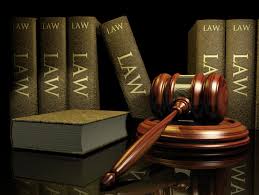People v Williams
2017 NY Slip Op 02588 [29 NY3d 84]
Decided on April 4, 2017
Call a New York Criminal Appeals Lawyer: 1-800-APPEALS (1-800-277-3257)
Issue:
Did the People’s PowerPoint Deprive Defendant of Fair Trial?
Whether defendant Williams was denied a fair trial by the People’s PowerPoint presentation where it displayed annotated images of trial exhibits that misrepresented witness testimony.
Holding:
Trial Court’s Corrective Action Ensured Jury Was Not Misled by Presentation
The Court of Appeals held that defendant was not denied the right to a fair trial as the trial court took prompt corrective action to stop the presentation and offered curative instructions to the jury.
Facts:
Several men broke into the victim’s apartment, shot the victim, cut him with a knife and poured bleach over his head. The victim testified at trial that he knew the defendant Williams from the neighborhood and identified him as the attacker, and also that he was on the phone with his brother when the men intruded. The brother testified as well, stating that he was driving on the block near the time of the crime and saw a few people wearing hooded clothing on the sidewalk. The brother though he recognized defendant, said “what up,” and the man responded with a wave. The brother admitted he could not see defendant’s face because it was dark outside and there was a blizzard but he “thought it was him.”
In summation, the prosecutor displayed a PowerPoint presentation containing slides of images the exhibits, some of which had been annotated with text, circles, and arrows. The prosecutor displayed slides depicting the still photographs from the surveillance video that showed the victim’s brother’s SUV with captions such as “the victim’s brother’s truck” and “the victim’s brother sees Defendant” despite the witness’s inability to make those definitive identifications in his trial testimony. Defense counsel objected at various points, several of which were sustained. The trial court voiced its concerns as well, at one point telling the jury to disregard the prosecutor’s annotations to the images of the trial exhibits. The court finally curtailed the presentation because of the annotations, stating that it was “not allowing any more…superimposed words.”
Defense counsel moved for a mistrial, arguing improper comment in several areas. The court, stated that it was “sympathetic” to certain arguments, but denied the mistrial. When asked what defense counsel wanted “short of a mistrial,” counsel declined. Defendant was convicted of burglary in the first degree, assault in the second degree, and criminal possession of a weapon in the second degree. The Appellate Division affirmed, holding that defendant was not deprived a fair trial by either the presentation or the prosecutor’s summation. The court also rejected defendant’s ineffective assistance claim.
Analysis:
Attorneys Entitled to Broad Latitude In Summation
As long as attorneys limit themselves to relevant matters “within the four corners of the evidence,” they are entitled to broad latitude in commenting on pertinent matters of fact in summation. (see People v Ashwal, 39 NY3d 105, 109 [1976]). The Court of Appeals explained that there is no inherit issue with the use of a PowerPoint as a visual aid in closing arguments and that, indeed, it can be an effective tool. The same long-standing rules governing proper conduct in summation apply equally to PowerPoint presentations. If counsel superimposes commentary to images of trial exhibits, “the annotations must, without question, accurately represent the trial evidence” (see e.g. People v Santiago, 22 NY3d 740, 751 [2014]. Any type of blatant appeal to the jury’s emotions or egregious proclamation of a defendant’s guilt would plainly be unacceptable (see e.g. State v Walker, 182 Wash 2d 463, 341 P3d 976 [2015]).
Court Stops the Presentation, Instruct Jury to Disregard
Defendant argues in this case that he was deprived of a fair trial by the annotations of the trial exhibits that implied the victim’s brother had positively identified the defendant when the brother did not definitively say as much in his testimony. The court was “very attuned” to the annotated slides and exercised discretion to stop the slideshow and instructed the jury to disregard the slides. As to the slides misrepresenting the evidence, the trial court instructed the jury more than once that attorneys’ arguments were not evidence, and that the jury itself was the sole judge of the facts. The actual trial exhibits remained in their original form for the jury’s examination. The Court of Appeals held, therefore, that defendant was not deprived of a fair trial, and that his ineffective assistance claim was without merit. The order of the Appellate Division was affirmed.
